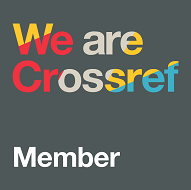Android-Based for Fiqh Science Learning
Abstract
Full Text:
PDFReferences
C. P. Lim and D. Churcill, “Mobile learning,” Interact. Learn. Environ., vol. 24, no. 2, pp. 273–276, 2016.
B. Eschenbrenner and F. F. H. Nah, “Mobile technology in education: uses and benefits,” Int. J. Mob. Learn. Organ., vol. 1, no. 2, pp. 159– 183, 2007.
N. Gandhewar and R. Sheikh, “Google Android: An emerging software platform for mobile devices,” Int. J. Comput. Sci. Eng., vol. 1, no. 1, pp. 12–17, 2010.
U. Farooq, W. Schafer, M. B. Rosson, and J. M. Carroll, “M-education: bridging the gap of mobile and desktop computing,” in Proceedings. IEEE International Workshop on Wireless and Mobile Technologies in Education, 2002, pp. 91–94.
Y. Mehdipour and H. Zerehkafi, “Mobile Learning for Education: Benefits and Challenges,” Int. J. Comput. Eng. Res., vol. 3, no. 6, pp. 93–101, 2013.
A. Mostakhdemin-Hosseini and J. Tuimala, “Mobile learning framework,” in IADIS International Conference Mobile Learning, 2005, pp. 203–207.
R. S. Cobcroft, S. J. Towers, J. E. Smith, and A. Bruns, “Mobile Learning In Review: Opportunities and Challenges for Learners, Teachers, and Institutions,” in Proceedings Online Learning and Teaching (OLT) Conference 2006, 2006, pp. 21–30.
A. K. Saha, “A Developer’s First Look At Android,” 2008. [9] J. Liu and J. Yu, “Research on development of android applications,” in 4th International Conference on Intelligent Networks and Intelligent Systems, 2011, pp. 69–72.
DOI: http://dx.doi.org/10.17977/um010v1i22018p022
Refbacks
- There are currently no refbacks.
 | Letters in Information Technology Education (LITE) |

1.png)
1.png)
4.png)
1.png)
.png)
.png)

3.png)
1.png)
1.png)

3.jpg)